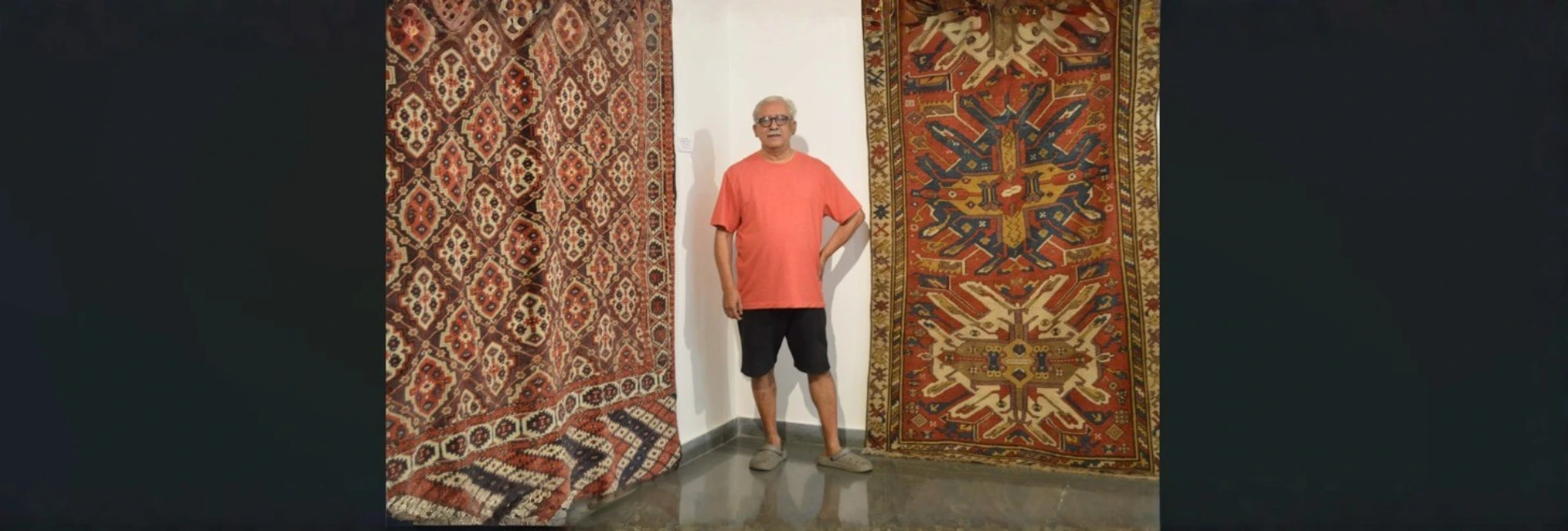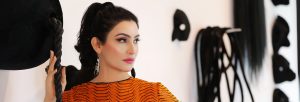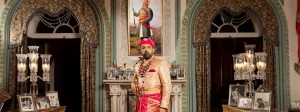(November 14, 2025) Bengaluru resident Danny Mehra is a former financial markets executive who has spent half of his life abroad and half in India, and owns some of the rarest tribal carpets in the country.
In Danny Mehra’s wallet, there is a fortune-cookie chit that he saved from a Chinese lunch over 30 years ago at a restaurant in NYC’s Chinatown. It reads, “You will step on the soil of many countries.” A prophecy that could not be more fitting for his life, he smiles, “This certainly came true for me.” Over the years, Danny along with his wife Renuka, has travelled to over 50 countries, including many from the Silk Roads region, and are looking forward to exploring the remaining 150. The Silk Road was an ancient network of trade routes linking East Asia with the Mediterranean, Middle East, and Europe. Originating in China and passing through Central Asia, India, and the Levant, it formed a vast system of land and sea corridors that carried not only goods but also ideas, knowledge, and religions.
View this post on Instagram
Early days
Born in 1957 in Meerut, Mehra says his first name was unusual for a kid from a smallish town near Delhi in northern India. “The story I was told was that I was named by my father’s sister, who was a Danny Kaye (American actor) fan. My name on my birth certificate is Ram, but Danny has endured,” he says.
He grew up and completed his education in the Meerut and the Delhi area, and went to the USA in 1983 for a graduate degree. When he was just 19 years old, he fell in love with Renuka who had also grown up in Meerut . “We had expected to return to India after a few years, but life had different plans. We ended up living overseas for 30 years, mostly in various parts of the US and Europe. Renuka built a career teaching elementary school, and I did assorted work in financial markets,” he says.
His journey with carpets also began quite serendipitously. It was his late mother-in-law, Beena, who wanted to give the couple an interesting wedding gift after they got married at the Cuyahoga County courthouse in Cleveland, Ohio. “We had a lovely family friend, Gordon, who used to work in a local carpet store. Beena and Gordon chose the carpets. The salesperson told them they were Moroccan, and probably about 100 years old. Knowing what I know now, I think they were wrong on both counts. They were probably Azerbaijani carpets with Caucasian iconography and were likely 50–75 years old at that time. They have beautiful wool and lovely dyes,” he says. That innocuous gift led Mehra to what he now calls his passion project.

Danny and Renuka
Carpet cues
Collecting carpets was not a conscious decision for Mehra; he did not set out to build a valuable collection. It was something that happened organically and took many twists and turns. “I think it may have been driven by a subliminal revolt in my head. My career was all about rational, logical thinking—left-brain stuff, and my hobby was the exact opposite: irrational, right-brain stuff, all about spontaneous beauty and naïveté,” he smiles.
He started working in the USA in the mid-80s and had no money to spare in the early days. His initial attempts at collecting involved trying to find bargains on his occasional trips with his wife from the US to Delhi, exploring Hauz Khas Village, Dilli Haat, local dealers, and random handicraft exhibitions. “Then one fine day in 1988, in an unusual bout of boldness, I ventured into a carpet store in midtown Manhattan and was delighted to acquire a prayer-format kilim from Turkey with the wildest candy colours one may ever encounter,” he says. He would also periodically rummage through piles at antique shops and thrift stores. This is how the couple acquired their first dozen or so pieces.
This initial attraction gradually began to morph as Mehra discovered he was always drawn to tribal carpets with inherent imperfections resulting from the conditions in which they were created. “Most of these pieces were woven by tribal nomadic and village weavers from remote mountains and villages along the Old Silk Road: the routes that connected the exotic lands between Europe and China over the last 1,000 years. A vast but thinly populated area of mountains, cold deserts, and exotic oasis settlements, and the historic cradle of tribal carpet weaving. Over 40 passionate years later, I have ended up with a mad collection of wonderfully happy weavings,” he says. Interestingly, Mehra has named his pet dogs Luri and Tulu. Tulu (meaning “hairy” in Turkish) is a carpet variety from central Turkey, and Luri refers to a carpet-weaving tribe in the Zagros Mountains in Iran.
View this post on Instagram
The art of imperfection
While a few of his carpets were acquired through his travels to some of these countries, the majority have come from other collectors, specialised pickers and dealers, auctions, museums, and antique markets. “The biggest joy is in the hunt and discovery. Every single piece has been acquired after looking through millions of pieces over the years. I call my collection ‘perfectly imperfect’. The more I learn, the less I know,” he says.
Mehra knows that art in general is difficult to objectively pin down and that art appreciation is subjective. While this is true for most forms of art, carpets tend to be even more esoteric. He advises that one must not take carpets too seriously but rather enjoy them as beautiful works of art. “Buy what you like. Not what others want you to like. A carpet you like will always make you smile. It will talk to you. If you have an old carpet in your home, it is priceless simply because it is a family heirloom. Not all old carpets are valuable carpets. But all valuable carpets are usually old carpets,” he adds.
Most of his carpets are from the 19th century, and the ethnographic context in which they were made is now nearly extinct. “Sociopolitical changes, economic drivers, terrorism, and war have permanently changed the tribal way of life. These genuine tribal weavings offer a rare glimpse into precious and beautiful traditions from a bygone era. It is all about discovering the next piece that strikes you as rare and unfamiliar and collectible, something that life is not worth living without,” he says.
View this post on Instagram
While Danny Mehra had over 2,500 carpets at one time, he is now pursuing a gradual deaccession process with the intent of distributing the collection across many homes in India. He is looking for a journey partner to showcase his carpets (he has roughly 1,500 as of now) across exhibitions, where he hopes they will find new homes where they will be loved as much. “Some are known designs but have individual expressions and interpretations. But they all are creations that have settled into peaceful harmony in the final resulting composition. Perfectly imperfect. Imperfectly perfect,” he signs off.
- Follow Danny Mehra on Instagram
ALSO READ: Meet Bulu Imam, the archaeologist who is protecting tribal art



